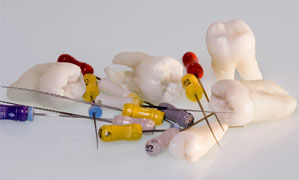Immediate Postoperative QoL after Single-Visit Endodontic Therapy not significantly affected by Instrumentation Technique

Immediate Postoperative QoL After Single-Visit Endodontic Therapy not significantly affected by Instrumentation Technique suggests a new study published in the Journal of Clinical Medicine.
Root canal treatment (RCT) eliminates damaged pulpal tissue and protects the tooth from recurrent microbial invasion. Post-endodontic pain (PEP) is a frequently encountered complication of root canal therapy. It can have an impact on patients’ quality of life (QoL) and their subjective perception of treatment options. Thus, a self-assessment questionnaire was used to evaluate and compare the influence of manual, rotary, and reciprocating file shaping procedures on immediate post-operative quality of life (POQoL) involving single-visit root canal therapy.
Root canal therapy (RCT) is a conservative therapeutic option that entails the removal of diseased pulpal tissue and prevents or treats pulpal/periradicular pathosis and safeguards the treated tooth from recurrent microbial invasion.
Post-endodontic pain (PEP) is a hallmark symptom of root canal therapy and a determinant of long-term failure. PEP typically develops because of acute inflammation in the tissues surrounding the root. Numerous factors can contribute to it, such as preparation that extends past the apical endpoint, insufficient pulp tissue removal, excessive root canal filling material, and the extrusion of dentinal and pulpal debris into the periapical region. Even when the preparation is kept at the apical endpoint, apical extrusion can still happen while using any instrumentation approach, whether manual or mechanical. During canal instrumentation, dentine chips, pulp tissue fragments, necrotic tissue, bacteria, and intracanal irritants may frequently be extruded into the apical foramen, causing post-operative pain.
It was a double-blinded, randomized, controlled clinical trial. A total of 120 participants were randomly assigned sequentially to three groups comprising 40 patients in each group: Group A: Hand K file (positive control); Group B: ProTaper Next file system; and Group C: WaveOne Gold. Post-operative pain was evaluated using a 4-point visual analog scale (VAS) after 12 h, 24 h, 48 h, 72 h, and 1 week.
The highest post-operative pain was with manual instrumentation using hand K files, and the lowest was with reciprocating and rotating instrumentations. No significant difference was noted between the parameters of quality of life assessed, suggesting the filing system or technique had a similar effect.
Reference:
Shetty V, Yelke S, Wahjuningrum DA, Luke AM, Testarelli L, Giardino L, Pawar AM. Post-Operative Quality of Life after Single-Visit Root Canal Treatment Employing Three Different Instrumentation Techniques—An Institutional Randomized Clinical Trial. Journal of Clinical Medicine. 2023; 12(4):1535. https://doi.org/10.3390/jcm12041535
Keywords:
Immediate, Postoperative, QoL, After, Single-Visit Endodontic, Therapy, significantly, affected, Instrumentation Technique, Shetty V, Yelke S, Wahjuningrum DA, Luke AM, Testarelli L, Giardino L, Pawar AM, Post-Operative Quality of Life, endodontics; root canal treatment; file systems; rotating files; reciprocating files; post-endodontic pain (PEP); quality of life (QoL)
from Medical News, Health News Latest, Medical News Today - Medical Dialogues | https://ift.tt/5dw1haS
Comments
Post a Comment